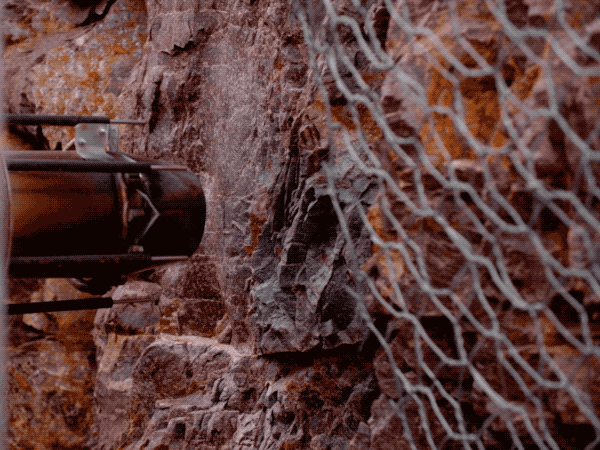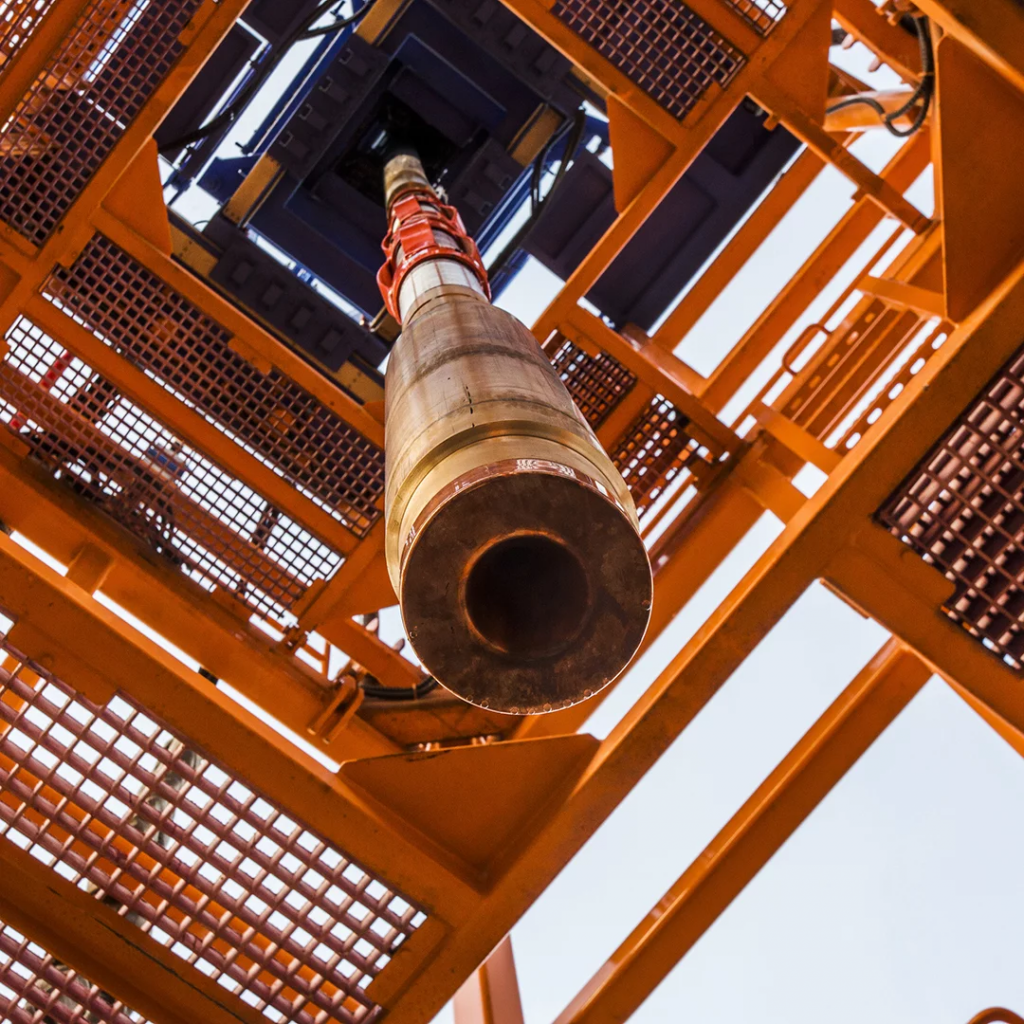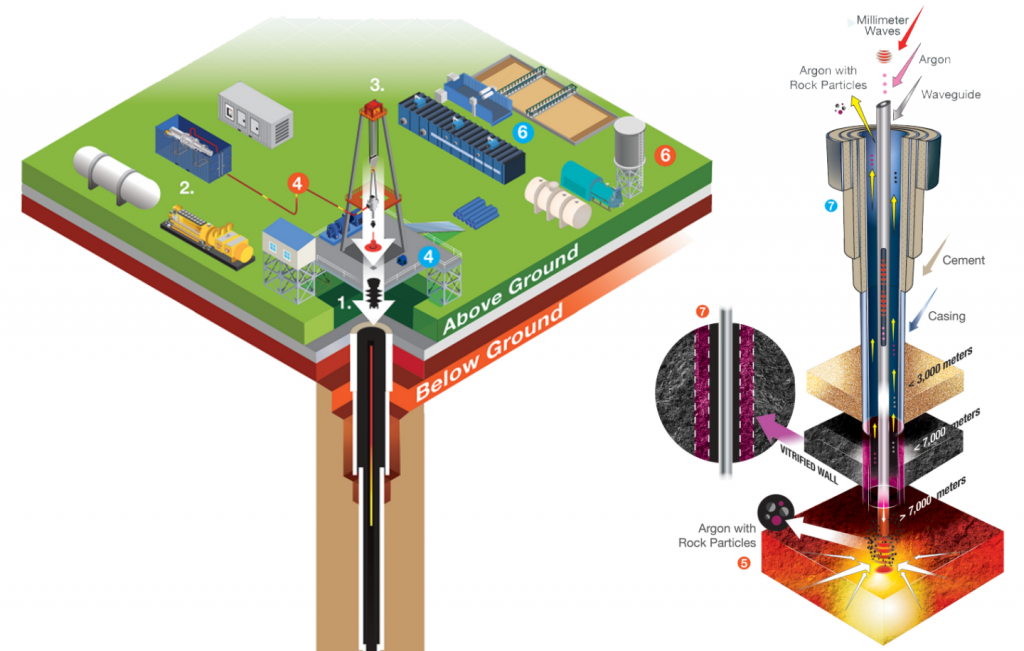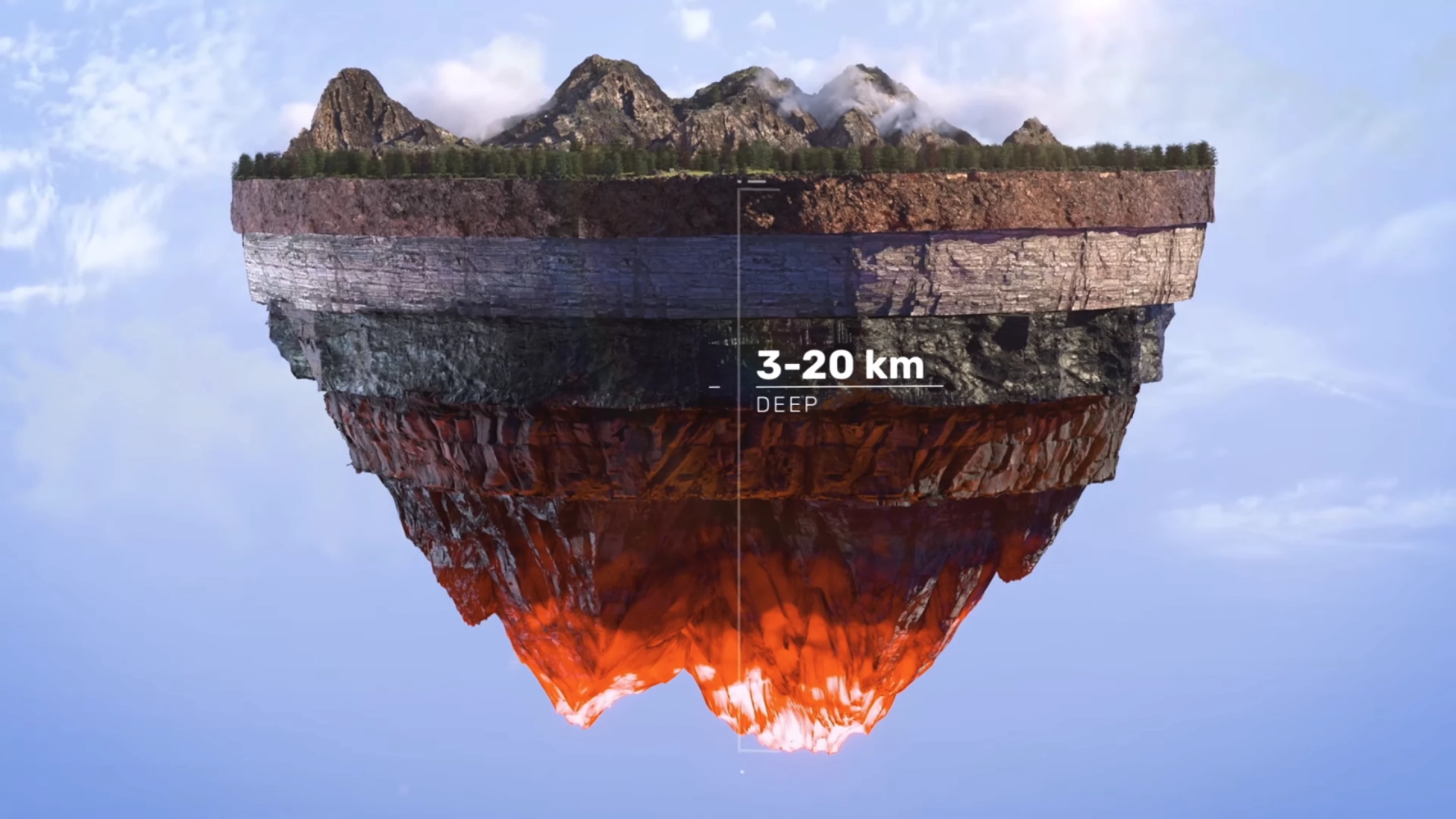Did you know that Iceland has one of the lowest levels of electricity prices? Many energy-intensive industries like aluminium producers have moved to Iceland because of this. And all this power is completely carbon-free – provided by geothermal energy on the small volcanic island state.
In this newsletter, I’ll address how recent developments in geothermal energy technology could change the game of global energy supply completely. We will discuss why:
- 💰 Cleantech VCs are investing more into ultra-deep geothermal as new technologies emerge
- 🌋 We must drill deeper…. ultra-deep in fact
- 🚀 We must drill faster & cheaper
- 💡 These startups enable ultra-deep geothermal worldwide
Geothermal energy isn’t new. Humans have bathed in hot springs (even build whole cities around them) centuries ago and build the first geothermal power plant around 1900 in Italy. In the face of climate change, there have been many attempts to utilise the Earth’s power to provide clean electricity and heat without the need for huge areas of land being covered by wind and solar power plants. The International Energy Agency (IEA) forecasts in their Sustainable Development Scenario that traditional geothermal energy will produce 282 TWh (282 billion kWh) of energy by 2030 – enough to power eighty million households’ electricity and three times as much as it did in 2019!
However, this would still be less than 1 % of the global energy demand in 2030 according to the IEA forecasts. Because geothermal energy isn’t readily available everywhere and drilling deep into Earth’s crust is not a cheap endeavour either, the large-scale adoption of geothermal energy has not happened, yet.
In the meanwhile, wind and solar have become so cheap that their triumph over the fossil world seems already safe. However, their intermittency of supply requires substantial amounts of storage, including batteries and hydrogen on a large scale. While battery storages and hydrogen production are becoming ever cheaper, storage still adds a big premium on renewable power costs.
That’s why some startups and investors believe that geothermal energy could become the most feasible alternative for safe, carbon-free, and cheap energy in the face of climate change. And they might be right in the light of recent technology innovations.
💰 Cleantech VCs are investing more into ultra-deep geothermal as new technologies emerge
In the past years, multiple startups working on ultra-deep geothermal technology closed financing rounds with total investments of more than $150 million. Just this year, Slovakia-based GA Drilling raised $20 million in two post-series-C rounds, and the US-based startup Quaise Energy raised $40 million in their Series A round (Update 08.06.22: Quaise just closed their extended $52 million Series A round). Even the US Department of Energy has announced this year that they’ll provide $20 million in funding for lowering costs of geothermal drilling.
All these startups and their investors dream of taping into a so far untapped source of clean and cheap electricity – ultra-deep geothermal energy!
But why do we have to go “ultra-deep”? And what does that even mean?
🌋 We must drill deeper…. ultra-deep in fact
As we drill deeper into Earth’s crust, temperatures begin to rise with every metre that we get closer to the liquid core and mantle of our plant. Already existing geothermal power plants have a well depth of around 3.5 km (2.2 miles). At this depth, the temperature reaches 200-300 °C (392-572 °F) which is enough to produce electricity with a steam turbine.
There is just one problem: these temperatures are not reached everywhere within these first few kilometres. Some regions like Iceland are closer to the magma beneath the crust and reach more suitable temperatures. Most other regions do not reach the necessary temperatures to efficiently run a geothermal power plant.
However, if you drill deep enough, temperatures will eventually reach the necessary levels. In contrast to conventional geothermal energy, ultra-deep geothermal is available everywhere on Earth.
Drilling ultra-deep, which means up to 20 km (12 miles) into our planet, does not only enable the use of geothermal energy everywhere. At this depth, which is targeted by several companies, temperatures of up to 500 °C (932 °F) can be reached. At these temperatures and the pressure in 20 km depth, water becomes supercritical, which means it can be used in highly efficient supercritical power plants. The startup Quaise Energy even says that their main goal is to retrofit existing coal power plants with an ultra-deep geothermal well. This would replace coal as energy carrier, while reusing existing infrastructure to save costs. Let’s just hope we don’t release the Balrog…

But if ultra-deep geothermal energy is so cool (pun intended), why aren’t we using it all over the world already?
🚀 We must drill faster & cheaper
Drilling deep is hard, slow, and expensive. It takes up 50-60 % of the total cost of a conventional geothermal plant and carries a lot of risk with it when you are in the currently used range. Drilling 4 km (2.5 miles) costs about $5 million. But if the heat reservoir you are targeting is deeper than expected, costs will increase exponentially with every kilometre. A well of 10 km (6.2 miles) will already cost four times as planned for half the length. Many projects failed in the past, because the developers expected the heat to be higher than it was, rendering their project economically infeasible, when the necessary temperature levels were not achieved
Most deep drilling is done today to access oil and gas deposits. These are usually within the sedimentary layers of Earth’s crust. That is why today’s drilling technology which uses mechanical contact and force to get through the mud and stone below works best within these layers. However, when you drill deeper you will eventually hit rock bottom. Literally. Below all the sedimental layers, which are more muddy and less solid rock, comes the basement rock or bedrock.
At this layer, the drill bits used for the higher layers bite on granite, because… well, it’s actually granite. Have you tried to drill through a concrete wall before? That’s damn hard. And now imagine it would be pure granite formed under the pressure of a dozen kilometres of stone and soil. And this difficulty to get through the stone can be seen quickly. Often drilling crews will only achieve 0.5-1 metres before the drill bit has to be changed. But how do you change a drill bit in a depth of 10 km? Exactly. You must pull up 10 km (6.2 miles) of drilling equipment, exchange the drilling bit, and lower it back down in a process called ‘tripping’. Already at a depth of 3 km, this process can take a well-trained drilling crew up to 32 hours – for a single meter of progress!
At this speed, going through 10km of bedrock would take 36 years! 🤯
Just for reference, the deepest hole humanity ever drilled was the Kola SG-3 hole which reached 12,262 metres (7.62 miles) in depth over a period of nearly 20 years. Obviously, this is not feasible if we want to drill multiple ultra-deep wells for geothermal energy as fast as possible to replace fossil fuels. It’s no surprise that drilling for so long at these depths becomes expensive – not only due to the high wear on tools, but also due to the work time of the whole drilling crew.
Due to the high cost of drilling deep and the long project timeframes, the cost of geothermal energy is currently between $30 and $60 per megawatt hour, according to the GeoVision 2019 report. Compared to on-shore wind and utility-scale solar PV which are at $17-$21 per MWh, these costs are not feasible. Although, wind and solar require additional storage and these costs are not included above, geothermal must become much cheaper and, therefore, much faster in drilling deeper, to become a competitive option.
Luckily, there is a light at the horizon: some startups have set out to revolutionise our drilling technology. The goal? To drill 20 km deep in under 100 days while lowering the cost of geothermal to $20 per MWh!
But who are those visionaries and how do they plan to achieve this overambitious goal?
💡 These startups enable ultra-deep geothermal worldwide
While different in the technological foundation both GA Drilling and Quaise Energy aim for the same goal: Enabling ultra-deep geothermal through contact-free drilling of super hard bedrock.
Contact-free drilling means replacing the classical drill bits, which drill by physical contact, with new drills which destroy hard rock in front of them without any touch, but with direct energy input. Sounds a bit like the sci-fi movies where lasers are used to drill, right? Well… It turns out that lasers in the visible light spectrum are not working that well when there is a lot of dust in the bore hole because the light gets scattered strongly by all the particles. That’s why companies have moved beyond lasers and either use direct plasma pulses to hit the rock or microwave the rock until it breaks or vaporises. The resulting debris is then pumped out of the hole with some purge gas in parallel.

This drilling robot heats and pulverises the hardest rock on Earth, without touching it. | Source: New Atlas
GA Drilling – Plasma-drilling for ultra-deep geothermal
GA drilling developed what they call the Plasmabit. It replaces the current drill bits when you reach the hard bedrock and pulverises it using high-powered plasma pulses. This way, legacy mechanical drilling is removed from the drill setup itself, reducing mechanical stress and wear. Due to this the drill head does not have to be replaced anymore and the process of tripping is completely removed from the ultra-deep drilling. Furthermore, the direct energy drilling gets through the hard rock much faster than legacy mechanical drilling. Just imagine a lightsabre cutting through the safety doors on the death star. That’s how it works.

GA Drilling is based in Slovakia and was founded in 2008 by Igor Kocis, Tomas Kristofic, Dusan Kocis, and Ivan Kocis. The four founders spent years on research and development of contactless plasma drilling and milling. By now they won 20+ grants, made 20+ technology inventions, and employ more than 100 employees in Slovakia, UK, US, and UAE. With the help of their latest investments, they target to drill their first full-depth wells within the next 18 months.
Quaise Energy – Millimeter microwave drilling
The US-based MIT spin-off Quaise Energy uses a similar approach. While they also drill through bedrock using direct energy drilling instead of legacy mechanical drilling, they don’t use plasma. They use a technology that was developed for nuclear fusion power plants. Yes, you read correctly: nuclear fusion.
Nuclear fusion researchers realised some time ago that the plasma in their test reactors could be heated well using microwaves. To generate these microwaves, machines called gyrotrons were developed and became available in megawatt size due to the continued investments in nuclear fusion by all nations of the world.

The team behind Quaise Energy was researching gyrotrons for plasma heating at MIT when they realised the potential for ultra-deep drilling. The gyrotron itself remains at the surface in this case and sends concentrated microwaves through a fibre optic cable down the well. Thanks to this, the only equipment in the well itself is just a pipe – no drill, turbines or anything that could get stuck, reducing the risk of losing a well during drilling operations further.
The team around CEO Carlos Araque, including Henry Phan, Franc Monmont, and Matthew Houde, and sixteen others is extremely ambitious and has shown an impressive pace in their development. Let’s see how quick they can get their technology into the field – currently the planned timeframe is 2024.
Noteworthy mentions
A couple of other innovators are developing solutions for the geothermal and ultra-deep drilling sector and should not go unmentioned in this article:
Fervo Energy – Distributed optical fibre sensing
In contrast to the previous two, Fervo Energy does not try to develop a new drilling bit but improve the process of drilling itself. The US-based company combines distributed fiber optic sensing and advanced computational modelling to improve the real-time surveillance and operation of the drilling procedure. This allows for more precise drilling and reduces the risk for failures during any given time.
NOV – Polycrystalline diamond compact bits for geothermal drilling
The company who has been a long-time supplier of the drilling industry, recently adapted it polycrystalline diamond compact (PDC) bits for geothermal environments, enabling longer drilling.
Greenfire Energy
The US-based company developed closed-loop geothermal technology to be used for retrofitting existing wells for geothermal energy extractions.
AltaRock Energy
AltaRock offers the full package for geothermal energy, combining state of the art drilling technologies, well completion, reservoir development, and enhanced geothermal systems into an all-round system.
Sage Geosystems
The US-based company integrates surface and subsurface data in their proprietary modelling tool to identify the best geothermal system for the location.
Full Metal Power
The company from the Netherlands reimagined the power section of conventional drills to work under high-temperature and pressure conditions. For this, they removed typical elastomers from the motor section of the drill by manufacturing full metal stators which require extreme precision. This allows to drill beyond current temperature levels (>160 °C), empowering traditional drilling technologies.
See you next week. 😉 (Haven’t subscribed to The Climate Innovator newsletter yet? Join here!)
Sources: Cleantech for Europe, Extantia, IEA, GA Drilling, Quaise Energy, Fervo Energy, Full Metal Power





